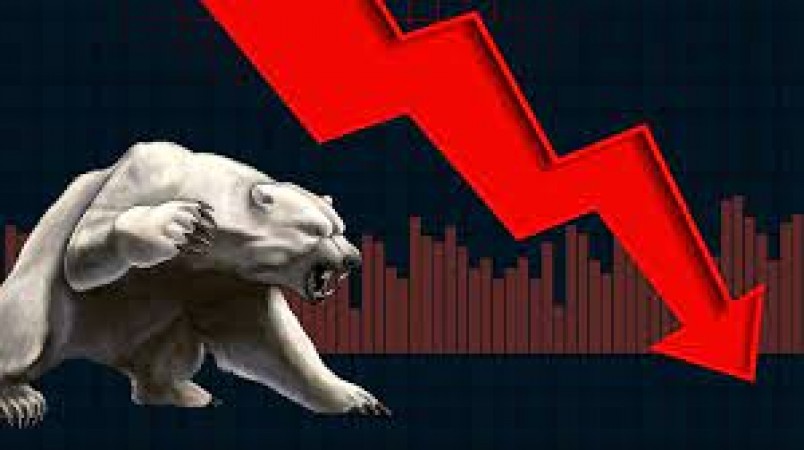
In a dramatic turn of events, the Indian stock market faced a substantial decline as bears took control, sending shockwaves through the financial landscape. The Sensex, India's premier stock index, plummeted by a staggering 460 points, while the Nifty index also witnessed a significant drop of 154 points. Concurrently, the Indian rupee faced depreciation, falling 25 paise to reach a 10-month low. This sudden downturn has raised concerns among investors and market enthusiasts alike.
The Bearish Onslaught
Understanding the Sensex and Nifty
To comprehend the magnitude of this market upheaval, it's essential to first grasp the significance of the Sensex and Nifty. The Sensex, short for the Sensitive Index, comprises the top 30 actively traded stocks on the Bombay Stock Exchange (BSE). Similarly, the Nifty, officially known as the Nifty 50, represents the performance of the National Stock Exchange (NSE)'s 50 large-cap companies. These indices serve as barometers for the overall health of the Indian stock market.
Unraveling the Points Plunge
The plummeting of the Sensex by 460 points and the Nifty by 154 points sent shockwaves across the financial world. This sudden decline indicates a considerable shift in market sentiment. The points drop signifies the collective loss of value in the indexed stocks, reflecting a bearish sentiment among investors. Such substantial point plunges are often associated with global economic factors, domestic policy changes, or even company-specific news that triggers a mass exodus of investors.
Rupee's Retreat: A Deeper Dive
Analyzing the Rupee's Depreciation
Alongside the stock market turmoil, the Indian rupee faced its own set of challenges. The currency depreciated by 25 paise, hitting a 10-month low against other major currencies. This depreciation is a reflection of various economic factors, including trade imbalances, inflation rates, and geopolitical uncertainties. A weaker rupee can lead to increased import costs, potentially impacting consumer prices and trade dynamics.
Factors Behind the Slide
Several factors contribute to the rupee's downward spiral. Global economic conditions, including rising interest rates in major economies, can attract capital away from emerging markets like India. Additionally, geopolitical tensions and fluctuations in global oil prices can exert pressure on the currency's value. These combined elements create a complex web of influences that impact the rupee's trajectory.
Investor Sentiment and Future Prospects
A Ripple Effect on Investor Sentiment
The severe decline in both the Sensex and Nifty has inevitably shaken investor confidence. The bearish trend raises concerns about the stability of the stock market and the broader economy. Investors are likely to adopt a cautious approach, reassessing their investment strategies and risk tolerance. The uncertainty stemming from such significant market drops can lead to short-term market volatility.
Assessing the Road Ahead
While the current market conditions are certainly challenging, it's important to maintain a long-term perspective. Market fluctuations are a natural part of the investment cycle, and recovery often follows periods of decline. Government policies, corporate earnings reports, and global economic indicators can play pivotal roles in steering the market's trajectory. Investors should consider seeking expert advice and diversifying their portfolios to mitigate risks during such uncertain times. The recent bearish onslaught that led to the Sensex shedding 460 points, the Nifty plummeting by 154 points, and the rupee's depreciation of 25 paise to a 10-month low has raised considerable concerns within the financial landscape. As investors grapple with market volatility, it's essential to remember that the stock market operates in cycles. While challenges persist, opportunities for recovery and growth often emerge in the wake of such downturns.
Challenges and Opportunities in the Electric Motorcycle Market Amidst Subsidy Reduction
Impact of Reduced Subsidies on Tork Motors' Business Strategy in the Electric Motorcycle Market
Unraveling the Relationship: Economic Rebound and Market Dynamics